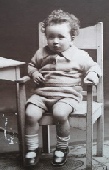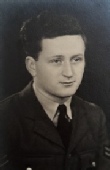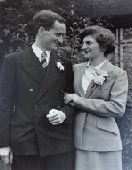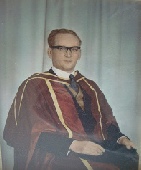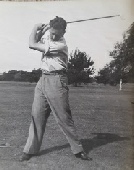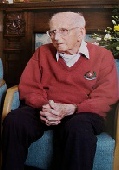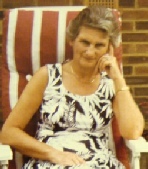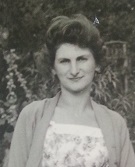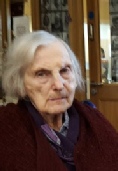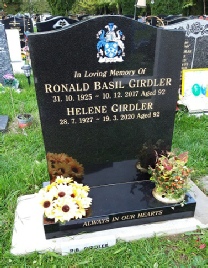The web site contains most of the Girdler, Gorham and Zamler Family stories researched by Ron and Helene Girdler.
I (Ron Girdler) have vague memories of my early days in Fulham but we moved to Court Way, Colindale, London, N.W. 9. in 1930 when I was only 5 years old. Court Way had a fairly large green in the middle of the road and we used to play on this green for long periods over the many years we were there. I went to my first school in 1930 - a small corrugated iron hut in Colindeep Lane (almost opposite the junction with Colin Park Road where the Everitt Edgecombe factory was later built) with only 2 teachers (Miss Coakley and Miss Bright). Shortly afterwards, Colindale School was built as the main primary school for the area and I started there in 1932 after my first school had closed down, and Miss Coakley and Miss Bright were both transferred to the new school. My school days there were quite enjoyable and due to the good teaching of Miss Coakley and Mr Davies (the senior teacher) I passed the grammar entrance examination, and was transferred to the "A" stream of the first year of grammer school at Christ's College Finchley, in September 1937. This was just over 3 miles from Colindale, and although I first travelled there by tube train to Hendon Central Station followed by a No. 183 bus to Finchley, later on I used to cycle there and back.
During this time, Just before the war, we spent many happy hours playing on and around the Court Way green - the main pastimes that I remember were playing with whipping tops, hoops, and having stilt races. One not so enjoyable experience was when I tried to free-wheel on my junior cycle down Court Way with my feet resting on the front mudguard and ended up by colliding nose-first with the lamppost outside No, 30 and was taken unconscious to the doctor’s surgery! I still have a bump on my nose to remind me of this occasion! Other memories of this period include belonging to the "Micky Mouse" Club, which was the Saturday morning cinema show for children and usually consisted of a Western film, followed by a cartoon and then a serial (e. g. Flash Gordon), which always ended at a critical point with the hero hanging over a precipice by his finger tips or a similar tense situation to make sure that you returned the following week to see what happened next! The admission fee was 3d, in the stalls and 4d. in the circle we we always went in the circle and on occasions used to flick pellets, made by folding up old bus tickets, at the children in the stalls below, with the aid of large elastic bands! My parents must have been quite generous with pocket money at this time, as I had 6 of the 2d, books which were published then - the "Adventure" on Mondays, the "Wizard" on Tuesdays, the "Champion" on Wednesdays, the "Hotspur" on Thursdays, the "Skipper" on Fridays, and the "Magnet" on Saturdays. Of all these, the "Magnet" was my favourite, and I always looked forward to the next adventure of Billy Bunter, Harry Wharton, Bob Cherry and Hurri Ramset Jam Singh!
When the Second World War started in 1939, we were not evacuated and studies became quite difficult because of the many air raids and the bombs. We frequently had to dash for shelter in the middle of a lesson whenever the air raid siren sounded - we ran quickly to the basement of the old part of the school. A number of incendiary bombs were dropped on the school one night, but luckily no great damage was done. At home, we had an Anderson corrugated iron shelter in the garden during the early part of the war and spent many hours of many nights in there, listening to the explosion of bombs dropping all over the Colindale and Hendon area. I used to cycle to the various bombed houses and sites the next day or soon after each bombing raid and I still have a road map of the Hendon area with my plotted locations of each bombed site. The worst damage was done by a land mine dropped on Colindale Station which completely destroyed the whole station, and a "buzz bomb" (a bomb attached to a remote-controlled engine which droned overhead until the engine cut out, which made it fall towards the ground, and the bomb exploded just before ground level causing much damage over a wide area), which devastated many roads in West Hendon. This map was reported in The Times in 2010. Towards the end of the war, we were supplied with a Morrison shelter (looking like a reinforced steel table) in the living room downstairs and often all slept under this table all night for safety. Despite the situation, however, we still managed to go out from time to time to the cinema and other places, I even remember walking up to the fish and chip shop at Colindale after dark with my friend John Demaine with our gas masks over our shoulders in order to buy a packet of chips! On Sundays, Peggy and I often went with Mum and Dad on the No. 142 bus to Stanmore, where we walked to Stanmore Common and watched some of the cricket match on Stanmore green. Then on Sunday evenings, we would usually play cards always with a plentiful supply of sweets on the table, specially bought at Flora’s s sweet shop for the occasion. Although sweets were still rationed, we saved up all our coupons for this weekly treat
At Christ's College! I passed my School Certificate Examinations, (equivalent to modern “O” levels) in 1942 and my conscription into the services was deferred to allow me to pass my Intermediate Examination (equivalent to “A" levels) in chemistry. physics, pure maths and applied maths. and also the Imperial College entrance examination. in 1944. then conscripted into the Royal Air Force as No. 1717930 A. C. 2. Girdler. During the previous year I had been worried about my heart as it kept on Missing beats and I had many "extra-systolic” murmurs. At my medical examination for the R. A, F this was noticed and I was referred to a Harley Street specialist, before being graded as Medical Grade 2 (unfit tor aircrew but fit for ground staff). I did my initial "square-bashing” and field training at R. A.F. Cosford and this involved intense physical activity such as running up hills with full packs, etc. Initially I thought I would die from a heart attack, but when I realised that my heart was strong enough under stress. I was so relieved and given so much more confidence that I willingly did extra cross-country running and never looked back. I quite enjoyed my period in the R. A. F.- playing soccer, tennis, rugby, badminton, etc. and participating in numerous athletics events. Most of my time in the R. A.F. was spent at the Air Force Experimental Establishment at R. A.F. Beaulieu. in the New Forest. Although the war ended in 1945 after I had been in the R. A.F. for just under year. I was not finally demobilised until March 1948. During this period. I managed to get frequent weekend passes to go home to Colindale. One really unforgettable occasion was when Court Way celebrated VE ( Victory in Europe) day in May 1945 and my father was one of the main organisers of the festivities, which Included sports races and novelty events during the afternoon followed by a massive tea on trestle tables on Court Way green, and then dancing on the green to a local band until the early hours of the next morning.
After I was demobilised in March 1948, I applied to Imperial College, South Kensington. to continue my education and take an Honours Degree in Chemistry. I had already passed their entrance examination in 1944 and this still held good. but the next academic year did not start until October 1948. I therefore looked around for a temporary job until the October and obtained a job as an Analytical Chemist at Johnsons of Hendon, manufacturing photographic chemicals. It was there that I met my Helene, who was working in the same laboratory. I left Johnsons in Sept. 1948 and went to Imperial College. In July 1950 1 obtained an Honours Degree in Chemistry and shortly afterwards started work as a Research Chemist with Roche Products Ltd. at Welwyn Garden City, Herts. I had bought a motor cycle and used it to travel from Colindale to Welwyn Garden City and back every day. During this time Helene and I had been “courting” and we decided to get married on Saturday Sept. 2nd 1951. However as I was motor-cycling home on the main A1 road on the eve of the wedding a baker's van came out of a side-turning and crashed into me. Witnesses said that I was seen hurtling through the air and I landed up unconscious on the Opposite side of the road (there were no crash helmets in those days!). I was taken to Barnet General Hospital with multiple cuts and bruises and a suspected fractured skull, and was stitched up above my left eye which was completely closed. My skull was fortunately not fractured, and the wedding was delayed until the very day I was "signed of” by my doctor and we got married at Burnt Oak Registry Office on Monday Sept. 10th. 1951. While the wedding photographs were being taken I had to turn my head to the left in order to hide the stitch marks and cheek abrasions on that side of my face!
On returning from honeymoon in Bournenouth. we moved immediately into a small semi-detached house at 2. Rookery Close. Colindale, only about a mile from my parents. I sold the motor cycle for £60 (It had cost £65 to repair) and shortly afterwardsobtained a job with British Drug Houses Ltd., City Road, Islington, as a Research and Development Chemist. In 1953 I changed Jobs again to work as a Research Chemist with Kaylene Chemicals Ltd at Cricklewood, only about 2 miles from home. It was while working there that I decided to continue my studies and started research In 1955 on "Studies of the Mechanism of the Friedel-Crafts Acylation Reaction" , in order to obtain a Ph.D. doctorate by thesis. My firm gave me permission to use their laboratories after normal working hours for this purpose, and I used to spend 4 or 5 nights a week working sometimes to the early hours of the next morning in this work.
In 1956 I transferred from research on drugs and pharmaceuticals to oil research when I obtained a post as a Research Chemist with the British Petroleum Co. Ltd. at Sunbury-on-Thames, Middlesex. We had our first car by this time, but the 20-mile journey to work was tedious and slow and we moved to our present house at 6, Faris Barn Drive, Woodham, Weybridge, Surrey in November 1956. My new employers also gave me permission to use their laboratories after normal working hours for my Ph.D. research studies and after 8 years of arduous and difficult research I finally completed my Thesis in June 1963 and was awarded a Ph.D. from the University of London. This helped me to progress within B. P. where I started working on the chemical composition of crude petroleum, then transferring to product research on bitumen and wax, promoted to Project Leader of the Wax Project in 1965, to Project Leader of the Bitumen Project in 1967, and finally to Technical Administrator of New Technology Division in 1980, before retiring in October 1983.
See Ron Girdler’s publication in The Times and Hendon Map about bomb sites during the Blitz.

